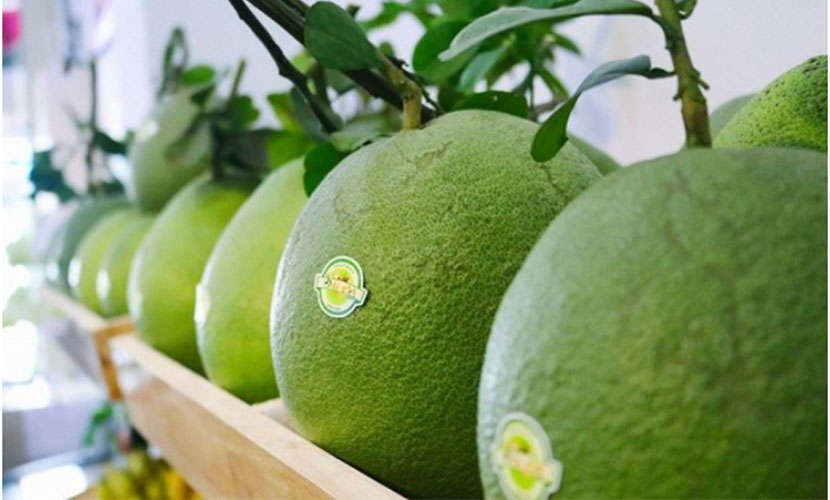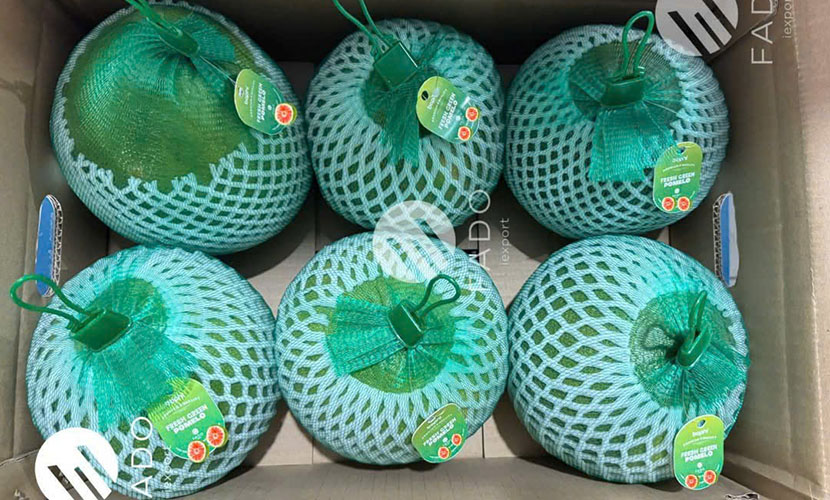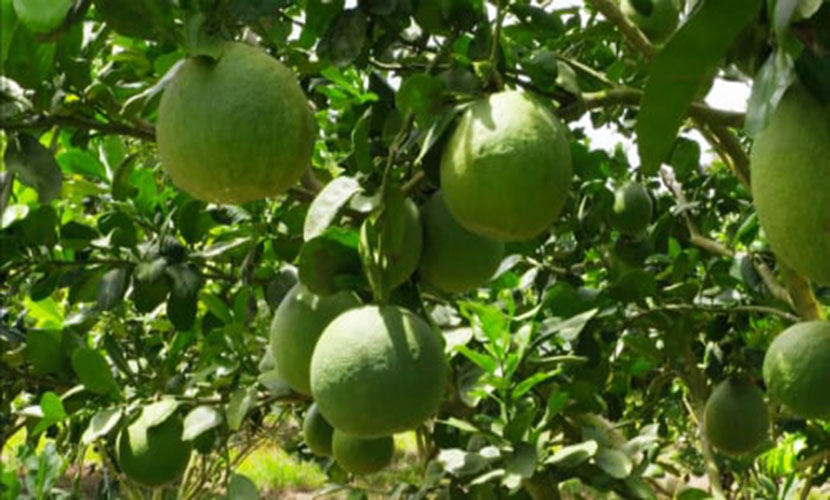
After appearing in supermarkets in the United States, Vietnamese grapefruits have officially conquered the Australian market. This has opened opportunities to expand markets and improve the quality of exported fruits.
Vietnam has just marked a new milestone on the agricultural export map. Specifically, fresh grapefruit has officially become the sixth fruit allowed to enter into the Australian market. Previously, mango, lychee, longan, rambutan, and dragon fruit have been available to this country. It has opened up great opportunities for Vietnam’s fruit industry, especially key grapefruit growing regions.

Vietnamese grapefruits
On 9th October 2025, both parties held the ceremony announcing the export of Vietnamese grapefruits to Australia. Earlier, Australia announced the completion of the pest risk assessment process. Then, they officially permitted the import of fresh grapefruits from Vietnam.
Accordingly, exported grapefruit shipments must meet plant quarantine requirements. Also they have approved planting area codes and packaging facilities certified by Australia. Most importantly, they should comply with strict pest control treatment procedures.
Australia is a country that has stringent biosecurity and quarantine standards. This event has been a major step forward affirming the reputation of Vietnamese agricultural products. This is also the result of years of technical negotiations between the regulatory agencies of the two countries. Also, they are efforts to upgrade quality, traceability, and Globalgap standards by domestic enterprises.
Mr. Hoang Trung is the Deputy Minister of Agriculture and Environment. He said that meeting these standards demonstrates that Vietnam’s agriculture sector strives to open markets. In addition, it also upgrades the entire production chain, from crop varieties and growing area management to post-harvest technology.
“The Australian market is a benchmark for integration capacity. Also, it is a springboard for Vietnamese agricultural exports to approach other demanding markets,” he emphasized.

A carton box of Vietnamese grapefruits
Vietnam currently has over 105,000 hectares of grapefruit plantations. Each year, it generates an output of approximately 900,000 tons. Key grapefruit varieties include Da Xanh grapefruit, Phuc Trach grapefruit, and Nam Roi grapefruit. They are distinguishable for their distinctive aroma, sweet and mild taste, good shelf life, and suitability for high-end consumer preferences.
Specifically, in Ben Tre, is the “capital of Da Xanh grapefruit,” with the cultivation area of 9,000 hectares. Most of which follow Vietgap or Globalgap standards, facilitating formal exports. Vietnamese grapefruits can offer fruits year-round. However, the main season ranges from September to February the following year.
In the first quarter of 2025, Vietnam’s grapefruit exports reached about $17.5 million. It showed a significant increase compared to the same period last year. The opening of the Australian market will boost this value in the near future, as this market offers high and stable import prices.
Vietnamese grapefruits bring considerable income to farmers. Also, they promote investment in cold chain supply, preprocessing, packaging, and export logistics. With Australia’s high standards, Vietnamese enterprises have the opportunity to upgrade preservation technology and traceability. Thereby, they can expand exports to other demanding markets such as the EU, Japan, and South Korea.

A grapefruit farm in Vietnam
In 2024, Vietnam’s fruit and vegetable exports reached over $7.2 billion, with a target of exceeding $8 billion in 2025. The main drivers are key products like durian, dragon fruit, mango, and now grapefruit. Adding another fruit allowed to enter into Australia broadens the product portfolio. In addition, it affirms Vietnam’s ability to control quality and food safety at an international level.
Experts believe that once Vietnamese grapefruit conquers the Australian market—a place with high imported fruit consumption and strict control systems—it will serve as a “passport” to help Vietnamese fruits more easily access other high-end markets. At the same time, this market opening creates motivation for localities to plan growing areas according to standards and link production with export businesses.
Following the success of mango, lychee, dragon fruit, and now grapefruit, Vietnam is gradually positioning itself in the global fruit supply chain. Many large export enterprises are ready to build the “Vietnam Grapefruit” brand on Australian shelves, aiming for a product image that is green, clean, and high-quality.
Vietnamese source: https://thuonggiaonline.vn/loai-trai-cay-thu-6-cua-viet-nam-duoc-xuat-khau-vao-uc-post563816.html
